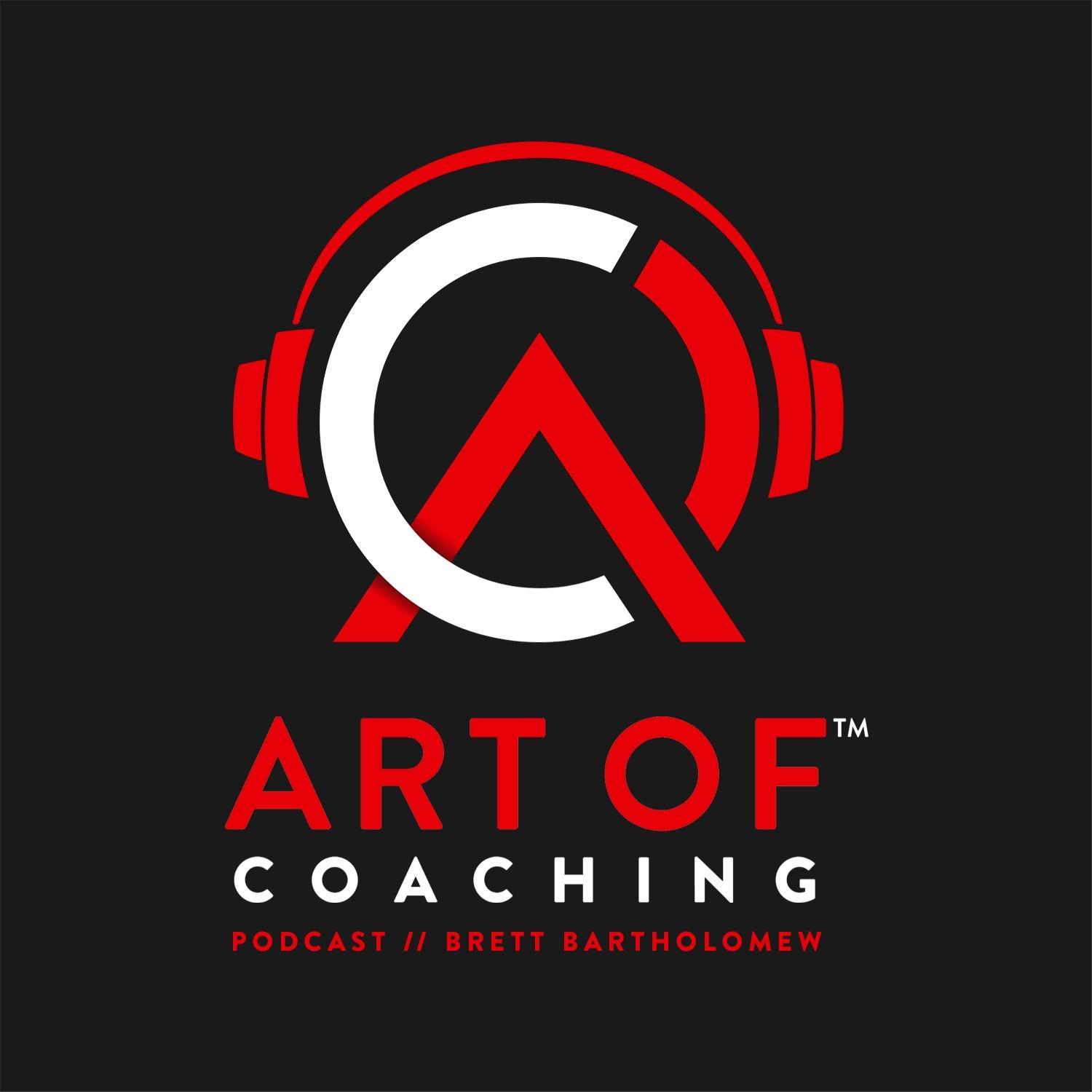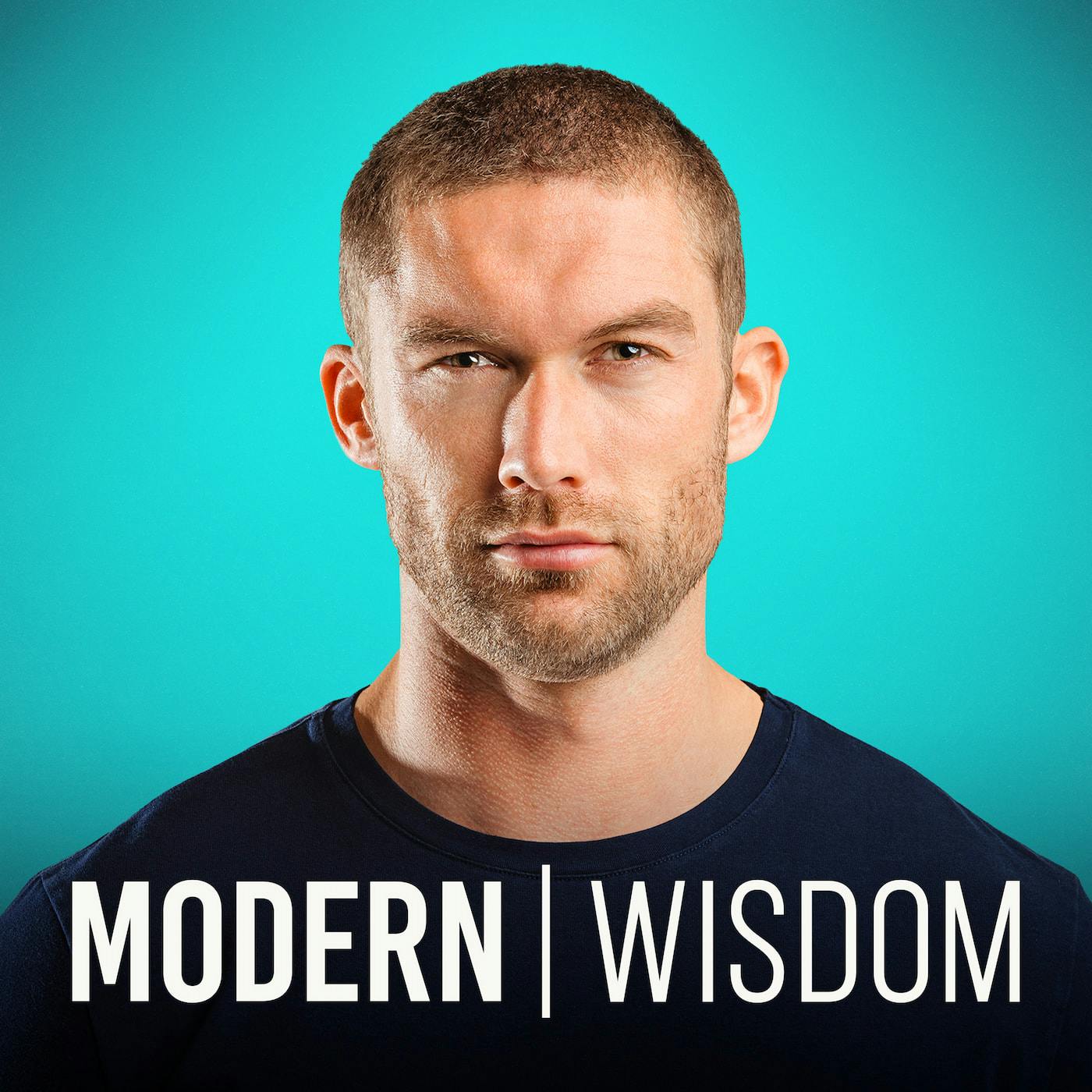
The Business Owner's Journey
We shorten the learning curve of business ownership by bringing on entrepreneurs, leaders, and innovators to share their stories, challenges, leadership practices, and winning strategies.
Welcome to ‘The Business Owner’s Journey', the podcast that’s here to help you navigate your way in the world of business ownership.
Hosted by 20+ year entrepreneur, Nick Berry.
Nick interviews entrepreneurs, leaders, and innovators to share their personal stories, challenges, leadership, and strategies from their own business owner’s journey.
Guests like:
Matt Diggity, John DiJulius, John Jantsch, Roland Gurney, Brett Bartholomew, Kiri Masters, Matt Goebel, Austin Mullins, Dr. Haley Perlus, Kelly Berry, Dana Farber, Steve McFarland, Sara Nay, Scott Fay, Daniel Wakefield, Jessica Yarmey, Shireen Hilal, Phil Putnam, Brooke Lively, Vivien Hudson, Anthony Milia, Romi Wallach, Nicole Mastrangelo, Melissa Darville
It’s crowdsourced business mentorship in highly concentrated doses.
We’ll cover:
- Strategy
- Leadership
- Ideas & Opportunities
- Best practices
- Tools and resources
- All of the Lessons and experience from our guests
This podcast for the business owners who are driven to grow and improve,
+ Who want realistic and actionable insights.
+ Who understand the immeasurable value in lessons learned from others.
+ And that they’re just one lightbulb moment away from a big breakthrough.
The goal is to shorten your learning curve so you can get out in front of challenges and be prepared for opportunities.
The journey for a business owner is hard. It’s complex, it’s stressful, and can be lonely.
But it can also be exciting, rewarding, and fulfilling, and you don’t have to do it alone.
Take advantage of insights and experiences of other business owners and how they’re navigating their own Business Owner’s Journeys, so you don't have to figure it all out on your own.
Learn from businesses like Diggity Marketing, Duct Tape Marketing, Bobsled Marketing Agency, Treacle Marketing Agency, Moonstone Marketing, Vistage, EOS, John Maxwell Team, Life Intended, Top Tier Headshots, Milia Marketing, The Daily Drip, Shiver Caribbean Desert
#SmallBusiness #Entrepreneur #BusinessGrowth #SmallBiz #Startup #BusinessTips #BusinessLessons #BusinessOwner #OnlineBusiness #SmallBusinessOwner
#BusinessMentor #BusinessCoach # BusinessMastermind #GrowthHacking #BusinessSuccess #BusinessLeadership #BusinessStrategy #MarketingStrategy
The Business Owner's Journey
Make Your Values 'Stickier' by Embedding Them in These Checkpoints
Full Episode Page: Make Your Business Core Values Sticky (NickBerry.info)
Also check out the Building a Sticky Business Culture Using Five Key Checkpoints blog post.
'The Business Owner's Journey' Episode Overview
How do you establish the culture you want in your business? How do you maintain (defend?) it?
Nick Berry shares five essential checkpoints for creating awareness and reinforcing a strong business culture - and then making it 'sticky', so it lasts.
Learn how to address common business culture problems by leveraging core values, leadership messaging, hiring processes, performance reviews, and the "culture infusion cycle". These five checkpoints can transform your business culture, ensuring alignment with your core values and fostering a positive work environment.
Key Takeaways
- Core Values: Establish clear and memorable core values that guide behavior within your organization.
- Leadership Message: Communicate the business vision and values regularly to keep them top of mind.
- Hiring Process: Integrate core values into every interview and onboarding session to ensure cultural alignment.
- Performance Reviews: Evaluate employees on their adherence to core values during performance reviews.
- Culture Infusion Cycle: Implement a system of consistent activities to reinforce core values at all levels of the business.
Quotes from the Episode
- "Your culture exists whether or not you are intentional about guiding it, so if you haven't defined it, chances are it's not going the direction you would want."
- "Performance reviews should evaluate adherence to core values."
- "The culture infusion cycle turns values from words on a wall into daily practices."
Resources Mentioned
The Business Owner's Journey podcast is where entrepreneurs, leaders, and innovators to share their personal stories, challenges, leadership, and strategies from their own journeys as business owners.
🟢 Official: NickBerry.info
🟢 tBOJ is hosted by Nick Berry and produced by Nick Berry, Kelly Berry & FCG.
🟢 Series Sponsors: SEOContentSurge, FR, Entrepreneur's Edge
➕ Interested in sponsoring, appearing on tBOJ, or having Nick as a guest on your podcast?
➕ Learn more about Nick Berry
Nick (00:00)
So you've got a values or culture problem or you think that you may and what that may look like. It could involve a performance issue, but it might not. It could be people good at their job, their skill wise, but not good for morale. They're a bad, bad people fit. Typically you're going to be able to trace that back to either not setting expectations very well or not maintaining expectations ongoing.
Nick (00:25)
So I'm going to share with you the system that we use to establish and reinforce our culture that got us recognition multiple years in a row as a best place to work for company culture at the same time as we were being recognized for growth, at the same time we were being recognized for client satisfaction. So we were able to maintain all three of those areas at one time and it wasn't an accident.
So we had to put things like this into place. So here's what we did for culture.
Nick (00:57)
It's super, super important for culture and values to be clear and to stay top of mind as often as possible with staff. That's your job as the leader.
There are five checkpoints that you can use to create awareness and reinforce the culture that you're trying to build. Core values, the leadership message, hiring process, performance reviews, and the culture infusion cycle.
So your core values, three to five is the rule of thumb, but they're the values that are gonna guide behavior in the business. They should be enough to give everybody the essentials as to how we're gonna do things here, but not so many that it's too many to remember or they're diluted. I feel like at this point, it's table stakes. You almost have to have them.
Your culture is, it exists. Whether or not you are intentional about guiding it is another thing. So if you don't have core values, if you haven't defined your culture to be, then chances are it's not going the direction that you would want. My recommendation is make sure that you've defined it. Use your core values to do that. That way you and your staff can work to be intentional about.
creating the culture that you want to have. And then you also need to have a consistent cadence of activities that are gonna demonstrate, they're gonna remind people, they're gonna reinforce the values in the culture, they're gonna keep it top of mind. So much of it's about top of mind. Second thing, the leadership message. So this is your 30 ,000 foot view and it's a combination of the vision, the where we're going and the core values.
how we're doing things, we do things here. So it's, this is where we're going, this is how we're gonna be along the way. As a leader, you are going to have to resurface and speak to the values regularly. That is part of the job. And you're gonna have to do more than simply read off the set of core values every time you have a meeting with your staff. So the leadership message is the way that,
So the leadership message is an instrument that I've just kind of evolved into using.
the leadership message is where you've captured from your perspective and are able to share with the other people on your team different ways to look at the core values and the vision other than just stating the core values verbatim. So, and it can look a lot of different ways. For still have this document that's called What It Means to Work Here.
And it's just a few pages long and it just talks about our values and why they're important and what they look like in our organization. So it's much more in depth and paints a much clearer picture than simply a list of core values. It's closer to a story.
And the message in that document was so similar to the way that I would talk about those things, about our values in day -to -day conversations, in meetings. So it captured my message to our staff about our values. One of our values was we do what we say we're going to do. And we do that because it's a sign of integrity, because...
It's a sign of reliability. And that's something that's really important to the people who came to us. And it was also who we are. That's really important to everybody, in my opinion. And so
That was one of our values. And we made sure that everyone understood it from different angles, not just here's a statement on a poster in our office.
Third checkpoint, the hiring process.
You want to make sure that you build core values into every interview and every onboarding session. You can even make an entire interview simply a culture interview.
Make sure that you're discussing core values in the behavior form.
and include the leadership message in onboarding. I sent out our What It Means to Work Here document to hire before they're even made.
Fourth checkpoint is performance reviews. So I think it's a good idea if staff members are discussing values as a part of their performance reviews every quarter, getting feedback from managers, peers if that's part of the review process, and doing a self -rating. Core value failure, repeated core value failure is fireable in my opinion, just like...
performance issues are. And I would also suggest that you could use a quarterly core value development plan or like a performance improvement plan. You can apply the same methodology to a values development plan. And I would want to make sure that all managers understood they're expected to reinforce core values as a part of communication meetings, all behaviors.
And the fifth checkpoint is what I call the infusion cycle. This is your system for getting your values to permeate the business. So you have to have this consistent cadence of activities built into the routines that are gonna demonstrate, they're gonna remind, they're gonna reinforce and surface the values, the culture, the expectations. It's gonna make everyone more aware. It just keeps it top of mind.
This is where you go from saying this is how we're going to be to being how you're going to be. You're going to lay out a series of daily, weekly, monthly, quarterly, and annual activities, reminders, et cetera. It can be a combination of all these
They all need to align and connect. It needs to be a coherent plan.
I'll just take you through this infusion cycle that I
we'll start with the daily reminders. First off, I want the core values to be visible. I want them somewhere that their eyeballs are going to be pointed at those values at some point during the day. Also, if you have regular recurring meetings, can use the start of those meetings to during introductions or highlights or headlines or whatever type of check -in.
to acknowledge specific instances of maybe a staff member or someone living out one of the core values. Little things, but they roll up into bigger things. So for the weekly activities. And I think the linchpin of this whole plan is the weekly activities. It's critical if you're gonna get this plan off the ground that the touch points need to be frequent enough.
that they don't just totally vaporize dissipate from one mention to the next. If you are having regular weekly meetings with staff, if everyone on staff is at least attending a meeting, then I think there's a good opportunity right there. If you installed some type of values or cultural reinforcement into your meeting agendas, then everyone immediately starts getting hit by.
some type of culture or values reminder every week. So what we would do is a core values recognition nomination. So we had a form set up. Anyone on our team could recognize anyone else for demonstrating any of our core values
that could be done anonymously. It didn't have to be. And then all of the recognition was compiled and sent out, shared with our team at the end of the week along with the examples and with the comments for each person. we would also do two levels. So we would have general recognition, which is like
awesome, like do a good job doing the thing, the way that we do it. And then there was
This would be for something extraordinary, over the that makes our company, whatever it is that we aspire to You could also do, if you send out weekly communication with your staff, you could do a core value of the week and build some message around that.
For the monthly cycle, what we would do is we would take all of the weekly recognition, roll that a report, and then share that during our monthly meetings with our staff. We'd just create one single report and share it, and it would have everything, the MVP and the general. And then for the quarterly, we would vote for an MVP. So we would take all of the recognition for every person.
and share that with the staff for the entire quarter, share that with the staff, let everybody vote on like who did the best, who was that person this quarter. we would have a quarterly MVP, we would give gift cards, we had plaques in our office. And so, you know, it's a big deal.
Everyone in the back of their mind always knows what it looks like when they see another of their coworkers, another team member living one of our core values. They know how to look for it. They know how to recognize it. And that's the culture that we want.
prize, I don't even remember. I don't know if they cared about that much at all. Probably at first, I think once the program was established, and it didn't take that long, I feel like them getting recognition from their peers that they felt like was authentic became the real reward. And then we would also just roll up the quarterly into.
An annual cycle, we would do our annual core values awards, which was very similar to the quarterly in that we would roll everything up into a report, let our staff vote. We'd have a first, second, third place winner for each of our core values. And then we would create a culture book. And it was like the annual finale to this whole cycle every year. would be like weekly recognition rolled up into quarterly, rolled up into.
annual and then we our awards that we would give and then it got put into a book. One year we did like a culture map that got put on the wall. We made sure that we included the comments from the peers. So, you know, by the end of the year, everybody on staff would have, you know, some mentions of themselves somewhere doing something that a peer had caught.
or acknowledged and it was in their peers words and if they didn't have something, if they hadn't been acknowledged, that problem typically got surfaced much earlier than it would have otherwise. It helped us see and I think it helps people become more aware and see on their own, like, I need to do more and here's what it looks like, right? Like, your peers are telling you, this is what this value looks like to us.
So that whole cycle is a really powerful tool that it takes the whole core values and the poster on the wall thing to a whole other level. It brings it to life. What you've got to watch out for is you've got to make sure that you're not just going through the motions that'll bring hollow pretty quickly. And also it's going to get stale over time. It's okay to change it up. Put yourself in their shoes and just think about like, okay,
What's it going to take to freshen this up a little bit? What tweak can we make without losing the validity of what we're doing here? And you can experiment. Your team will be able to help you. They'll have ideas too. know, you're going to have to iterate on it. So get started with the ideal in mind, but roll with MVP. Just get something out there and
know that you're going to have to iterate in order to get to ideal. So remember, it's important you've got to set expectations when it comes to your values and culture, and you've got to be consistent. You've got to surface, acknowledge, and if you don't, they're gonna erode and dissipate eventually.
All right, those are the five culture and values checkpoints that are going to help you create awareness and reinforce culture that you're trying to build. And if you're having a culture or a values problem, hopefully get you help you smoke that out and get it corrected ASAP. Let me know what you think.














